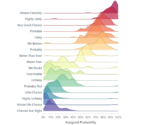
by tyler garrett | May 25, 2025 | Data Visual
In the realm of complex business decisions, clarity is power. Data visualizations serve as essential tools, turning complicated data streams into understandable information. Yet, without appropriate annotations and references, even the most visually compelling graphics risk falling short. Annotations and reference notes act like signposts, guiding decision-makers through visual data narratives to the critical insights they need. Understanding how to harness these tools effectively can bring substantial benefits: improved decision-making speed, enhanced interpretability, greater accuracy, and more impactful presentations. At our software consulting firm, we’ve guided organizations across many industries—from construction management companies leveraging our specialized Procore API consulting services, to healthcare facilities in Austin benefiting from advanced data analytics transformations. Today, let’s explore how annotations and references can elevate your explanatory visualizations.
Why Annotations are Crucial for Visual Impact
Annotations serve as explanatory footnotes within data visualizations. Whether it’s a time series plot, a heatmap, or a complex scatter plot, annotations help the audience zero in on vital information. Highlighting key metrics or pointing out anomalies allows viewers to quickly understand the critical elements of your data story. Too frequently, visualizations are presented barebones—assuming the data alone tells the story. However, decision-makers need context mapped directly onto visuals to quickly comprehend results and implications.
For instance, when documenting significant operational milestones in a time series, annotations can succinctly communicate specific organizational changes, market events, or even compliance regulations at particular periods. This targeted approach makes visualizations not merely informative but inherently persuasive and actionable. Moreover, smart annotations are indispensable for streamlining communications in reports and dashboards, ensuring audience understanding without overwhelming viewers with excessive detail.
Consider a recent implementation pattern from our experts in stream table join implementation patterns. By clearly annotating specific join points within visual data flows, stakeholders could quickly grasp the underlying logic and architecture of data streams, facilitating faster buy-in and improved technical clarity. Strategically blending annotations with visual content ensures precise communication of data-driven insights.
References: Establishing Credibility and Reliability
References build trust in your visualizations. When stakeholders make important strategic decisions based on data visualizations, they require assurance that the underlying data is valid, verifiable, and credible. Clearly identified references supply decision-makers with the confidence that visualizations derive from reputable and verifiable sources. Effective referencing contributes to transparency, accountability, and ultimately better decision-making.
A reference may point to external data sources, scientific journal articles, or industry reports. Additionally, visualizations referencing known standards, guidelines, or compliance regulations enhance trust and professional insight. For example, healthcare organizations rapidly adopting advanced analytics must explicitly reference credible sources, as detailed in our recent article on how data analytics is transforming the healthcare industry in Austin. Linking visual analytics directly to credible external sources reassures viewers that data is reliable and accurate.
Moreover, referencing internal business systems, such as Tableau visualizations within an enterprise, builds data literacy and ensures smoother decision-making workflows. Our guide on how to install Tableau desktop equips decision-makers with reliable resources for utilizing trusted visualization software. Thus, references reinforce visualizations by providing assurances of authoritative and objective data sources—critical for strategic interpretation and confident decision making.
Best Practices for Annotation and Reference Integration
Mastering annotations and references in your data visualization effort requires particular attention. Storytelling clarity is essential; optimal integration ensures your annotations or references do not obstruct or confuse the main message. The goal should always be to enhance meaning without overwhelming visual complexity. A strategic content hierarchy, combined with visual style consistency, is key—keeping text succinct and visually non-intrusive.
Strategically placed annotations help instill context without creating clutter. Contextual pop-ups, intuitive markers, and flexible interactive visualization frameworks enable exploration without visual overload. Similarly, references ideally should reside unobtrusively, yet be quickly accessible when credibility verification is essential. Techniques such as endnotes, clickable sources, or embedded hyperlinks keep visualization interfaces clean yet provide vital supporting evidence.
Our article detailing semantic layer optimization for multi-dimensional analysis demonstrates effective practice by clearly connecting visual outputs directly to the semantic layer itself. The referenced optimization details reinforce the credibility while annotations indicate potential performance impacts clearly. Adopting these practices ensures visualizations not only remain compelling and informative but maintain transparency within visualization-driven analytical workflows.
Interactive Annotations in Modern Data Visualization Tools
Modern visualization tools increasingly prioritize interactivity, and annotations are no exception. Allowing stakeholders to interactively engage with annotations provides deeper insights without visual clutter. Interactive annotations provide contextually relevant notes and highlights dynamically, delivering clarity and enhancing user empowerment. Decision-makers appreciate interactive annotations because they provide control, allowing stakeholders to reveal supplemental information as needed.
For instance, platforms like Tableau offer extensive interactive annotation features. Not only can users hover over data points for more context, but advanced embedding options—like those discussed in our article about configuring SAML forward proxy Tableau—enable secure, personalized views tailored to decision-makers’ roles. These interactive annotation systems optimize focus and prevent information overload.
Interactive annotations also empower technical teams—offering efficient management processes. As outlined in our recent explanation of Canopy update 0.1.1, being able to interactively annotate dashboards provides crucial context around updates, bugs, data changes, and strategic decision-making points during project lifecycles. Such interactive features address information accessibility and enable agile iteration for better outcomes.
Common Missteps and How to Avoid Them
While annotations and references significantly enhance explanatory visualizations, poor implementation may negate their impact. Annotations must always support comprehension—not complicate it. Common mistakes include overly verbose annotations, ambiguous references or unclear markers, and chaotic annotation placements. To avoid such pitfalls, ensure brevity and crisp, clear language. A well-executed annotation subtly enhances understanding without distracting from visual impact.
Additionally, maintaining consistent visual styles and consistent placement standards for annotations ensures user-friendliness. Avoid confusing jargon; precision language tailored to your stakeholders’ technical knowledge level is ideal. Likewise, ambiguous references to unclear or unreliable sources must be avoided to maintain the professional and trustworthy nature of your visualization.
Creating efficient systems for addressing high-priority issues often requires clear visual tracking supported by thorough, understandable annotation practices. Instead of viewing annotations as mere afterthoughts, integrate thoughtful marker placement, compact straightforward language, reliable and verifiable references, and effective interactivity practices. This thoughtful integration ensures annotations and references serve their intended purpose: powerful enhancements to decision-driven, explanatory visualizations.
The Future of Annotations and References in Data Visualization
The landscape of annotation and reference techniques constantly evolves alongside digital visualization advancements. Artificial intelligence (AI), machine learning, and automation integrations increasingly offer extensive annotation and interactive reference capabilities. Leveraging intelligent auto-annotation algorithms reduces human-intensive effort, allowing visualization creators to prioritize narrative storytelling instead.
Future trends also indicate enhancements in annotation adaptability, including smarter AI-driven contextual annotations, dynamically adjusting visualizations in real-time, and personalized annotation layers customized to the viewer’s role or requirements. As these visualization complexities grow, robust referencing techniques will carry even greater importance in maintaining trustworthiness and credibility of sophisticated visualization-driven narratives.
Looking toward the future, proactive adoption and continuous mastery of annotations and references remain crucial. With our continued commitment at the intersection of data, analytics, and innovation, businesses can harness these techniques to ensure visualizations are understandable, actionable, credible, and strategically empowering.
Thank you for your support, follow DEV3LOPCOM, LLC on LinkedIn and YouTube.

by tyler garrett | May 25, 2025 | Data Visual
In an era marked by data ubiquity and real-time analytics, decision-makers require dynamic dashboard solutions that transcend static visualizations. Static dashboards provide insights, but truly innovative businesses require interactive solutions that enable on-the-fly exploration. Implementing interactive crossfiltering within multi-chart dashboards provides executives and data specialists alike with a powerful toolset to perform ad-hoc analysis, discover hidden patterns, and streamline informed decision-making. At our software consulting firm, we’ve witnessed firsthand how robust interactive crossfiltering transforms analytical capabilities, empowering organizations to dig deeper into their data narratives efficiently and intuitively. Leveraging interactive data visualization techniques provides exceptional efficiencies, granting stakeholders an intuitive, seamless means to dissect complex datasets and enabling rapid decision-making in today’s fast-paced business environment.
Understanding the Core Concept—Crossfiltering Explained
Interactive crossfiltering refers to a mechanism in advanced dashboarding where selecting a data element in one chart filters data presented visually across all linked charts. Simply put, crossfiltering emphasizes interactivity; any data-driven selection performed in one visualization dynamically updates others, allowing users to quickly pinpoint correlations, trends, and anomalies. Instead of analyzing chart-by-chart individually, this holistic approach delivers a complete, integrated view, thus significantly enhancing the analytical power of data-driven dashboards.
Implementing effective crossfiltering entails establishing clear relationships between different elements within data sets. Strategic data engineering is essential here, requiring a robust understanding of data schemas, table relationships, and SQL table modifications. When carefully designed, interactive crossfiltering is transformative, as users seamlessly filter vast amounts of data merely through intuitive visual touchpoints.
Furthermore, it’s important to differentiate between static visual inventories and dashboards that ‘talk.’ Successful interactive crossfiltering depends highly on data pipelines continually updating analytics in real-time or near-real-time. Strategic pipeline execution planning ensures the data supporting interactivity is reliable, accurate, and suitable for meaningful exploration. Organizations that neglect proper data engineering consulting in Austin, Texas or globally risk deploying dashboards incapable of delivering real-time and interactive insights.
The Business Case—Why Interactive Crossfiltering Matters
Business leadership increasingly demands quick answers to pressing questions. Static dashboards—while informative—often fall short in swiftly delivering actionable insights as business dynamics shift throughout the working day. Interactive crossfiltering, on the other hand, greatly reduces the latency between posing queries and receiving relevant analysis. Visual analytics delivered through intuitive user interactions enable decision-makers to adapt quickly to changing landscapes, granting them a considerable competitive advantage.
Consider complex business scenarios such as sales pipeline monitoring, demand forecasting, or inventory management. Implementing crossfiltering allows stakeholders to drill effortlessly into relevant dimensions or metrics—for example, viewing product demand through regions, dates, or sales channels. Decision-makers gain an unprecedented capability: making efficient, data-driven strategic decisions that optimize inventory levels or operational efficiency. Our experience in optimizing inventory levels through demand forecasting highlights precisely how interactive crossfiltering significantly enhances insights for inventory management.
Moreover, interactive dashboards empower non-technical users to perform intricate analyses without deep programming or SQL knowledge. Crossfiltering democratizes data access, shifting responsibilities from overloaded data analysts and data engineers, and providing business users more direct control. Consequently, analytics teams improve focus on developing innovative models, leveraging data-driven decision making strategies, instead of manually processing repeated analytics requests.
Key Technical Considerations in Crossfilter Implementation
Implementing interactive crossfiltering requires careful technical planning. Data engineers, dashboard architects, and visualization specialists must come together in crafting solutions that support seamless cross-chart communication. Ensuring efficient data flows, optimizing querying mechanisms, and structuring data scientifically all become foundational concerns for reliably functional crossfiltering.
Organizations should begin the technical implementation with careful emphasis on data modeling best practices, optimizing schemas for quick querying performance. It may involve thoroughly analyzing backend systems to identify potential bottlenecks, usability concerns, or constraints limiting crossfilter performance. Proper alignment with database systems—whether utilizing PostgreSQL or SQL Server—is crucial, as our experts discuss in depth regarding differences between PostgreSQL and SQL Server. This strategic alignment enables faster responses to filtering queries and streamlines real-time interactivity.
Another pivotal technical consideration is setting the scope of interactivity. Too many filters or overly complicated filtering conditions can confuse end-users and degrade performance. Interactive crossfiltering implementation must balance between providing users meaningful flexibility and maintaining visual simplicity and responsiveness.
Enhancing Crossfilter Dashboard Performance Through Innovation
As organizations scale dashboard usage, they frequently experience performance degradation. Complex dashboards are data-intensive, requiring strategic use of efficient data processing and visualization solutions. Many organizations face performance issues not because interaction capability is insufficient, but rather as the scalability of their dashboards becomes limited by data processing overhead. Here, innovative solutions, such as knowledge distillation techniques for lightweight dashboard models, come into focus, allowing enterprises to streamline and optimize performance of large-scale interactive dashboards.
Further innovation can come from executing advanced data engineering strategies, including real-time event processing and analytical workflows. As explained in our data engineering case study scaling to handle billions of events daily, robust infrastructure ensures that interactive dashboards reliably perform when data is being constantly refreshed at high volumes.
Cloud-based infrastructure and modern data platforms provide scalable solutions, considerably reducing latency when implementing crossfiltering functionality. Carefully crafted data-driven backends and cloud solutions empower businesses to dynamically and interactively engage with vast datasets without compromising performance, even during peak analytical loads.
Best Practices for User-centric Interactive Dashboard Design
Building dashboards that truly resonate with end-users involves another profound dimension—in-depth user experience (UX) design considerations. Effective interactive crossfiltering dashboards emphasize minimalism, clarity, intuitive navigation, and user-friendly interfaces. Unsurprisingly, simpler user interfaces minimize training overhead, reduce confusion, and ensure user productivity.
The design of interactive dashboards, therefore, must factor in user needs clearly. Following a progressive disclosure approach, users are initially presented streamlined, simplified data summaries and allowed to delve deeper into data layers when desired. Consistent user feedback mechanisms must inform interactive design, enabling dashboards to evolve over time to meet evolving business requirements.
Additionally, comprehensible visual feedback mechanisms are crucial when employing crossfiltering. Users need clear acknowledgment of their selections’ impact across the dashboards to avoid confusion. Transparency throughout user interaction sequences confirms user actions and helps clearly communicate filtering logic.
Unlocking the Full Potential of Data-driven Dashboards through Expert Partnership
Interactive crossfiltering promises powerful insights, accelerated decision-making, and unprecedented analytical freedom. However, deploying effective solutions requires specialized expertise, sophisticated data engineering methodologies, in-depth strategic planning, and careful implementation that matches end-user requirements. Partnering with proven data and analytics experts ensures the full realization of your interactive dashboards’ potential.
As data engineering consulting experts in Austin, Texas, our team possesses extensive hands-on experience and insights necessary for driving innovation and strategic analytics deployment. We emphasize holistic approaches embracing infrastructure, usability, data engineering, and innovative analytical methodologies. For support unlocking interactive dashboard potential, consider exploring our data engineering consulting services.
Interactive crossfiltering can revolutionize your analytical capabilities—transforming data-driven decision-making from static to dynamic, reactive, and exceptionally strategic methodologies. Seizing opportunity means harnessing sophisticated analytics interactivity intelligently, intentionally—and with expert implementation guidance.
Thank you for your support, follow DEV3LOPCOM, LLC on LinkedIn and YouTube.

by tyler garrett | May 23, 2025 | Data Visual
In today’s data-driven world, conveying complex information quickly and clearly can mean the difference between informed decisions and missed opportunities. Decision-makers, analysts, and organizational leaders increasingly lean on visual analytics to capture enormous data sets concisely and effectively. Within this evolving visual landscape emerges the Isotype chart—a striking pictogram visualization method that leverages visually compelling symbols and images to tell a story while efficiently communicating critical data points. By merging modern technology with the trusted format of icons and pictograms, organizations have an ideal option to distill insights for stakeholders instantly. Whether enhancing dashboards, reports, or presentations, Isotype charts offer a robust solution for ensuring clarity, usability, and immediate impression. Let’s explore deeper into the history, benefits, and modern-day implementations of Isotype charts, positioning your data visualization approach exactly where innovation meets practicality.
Understanding the History and Fundamentals of the Isotype Concept
To harness the power of Isotype charts, it’s essential to recognize their origins and conceptual underpinnings. Developed in the 1920s by Austrian sociologist Otto Neurath, Isotype (International System of Typographic Picture Education) aimed to simplify complex data into universal pictorial representations, ensuring broad understanding regardless of language. Neurath realized that visual communication could transcend linguistic barriers, making intricate statistical concepts intuitive and accessible. Initially widely applied in educational contexts, its principles quickly caught traction in international information dissemination efforts. Isotype designs leveraged standardized symbols, icons, and colors to maintain consistency throughout visualizations, allowing viewers instant comprehension and retention of information depicted.
The timeless fundamentals of Isotype charts focus on clarity, simplicity, and repeatable iconography. Today, technical strategists and visualization experts across enterprises aim to capitalize precisely upon these enduring qualities— reducing ambiguity and communicating critical insights effectively. By employing strategic iconography, sophisticated data storytelling becomes achievable even for non-expert audiences or stakeholders not familiar with specialized charts. Modern applications include integrating Isotype techniques within Tableau Server environments to ensure visual consistency across dashboards and reports, bringing precision and a familiar visual language to data resources.
The Advantages of Implementing Isotype Visualization in Modern Data Analytics
Today’s executives and analytics teams seek visualization tools not only for their aesthetic appeal but particularly for effectiveness in clear communication and informed decision-making. Implementing Isotype charts helps analysts meet these demands by catering directly to human cognitive strengths; pictograms offer the immediacy needed for stakeholders to assimilate crucial insights quickly. Unlike traditional visualizations that risk overwhelming audiences with potentially complex numeric graphics, Isotype charts present intuitive visual representations, accelerating understanding and reducing cognitive fatigue when absorbing complicated metrics.
Another significant advantage lies in the quick identification of patterns or anomalies within large or multidimensional datasets. By adopting intuitive color-coding, icon repetitions, and color channel separation for multidimensional encoding, Isotype charts enable users to identify insights from complex information at a glance. Leveraging this visualization format on enterprise-level dashboards enables faster recognition of critical insights, supporting strategic decision-making processes more efficiently and confidently. Moreover, clear data comprehension offered by Isotype charts ensures a meaningful engagement with data and highlights essential insights instantly upon visualization.
Integrating Isotype Charts with Modern Data Warehousing
Contemporary business environments manage enormous datasets, using advanced data warehousing solutions to streamline analytics capabilities. For organizations pursuing robust analytics platforms, integrating pictogram-driven Isotype visualizations with efficient data warehousing consulting services can provide a seamless bridge between raw data and accessible information insights. Advanced data warehouses process, store, and optimize large amounts of structured and unstructured data quickly—feeding dashboards and visualizations in real-time scenarios. Integrating powerful Isotype charts directly with modern data warehouses amplifies analytic effectiveness by delivering information visually appealingly, intuitively, and in formats optimized for speed of interpretation and insight extraction.
The integration of Isotype visualization within data warehousing environments offers near-instant visual interpretation of complex relationships among data points, aiding leaders and analysts alike in real-time operational monitoring and strategic decision-making. Companies seeking instant insight extraction from their inventory management operations, for example, could leverage Isotype visualizations alongside groundbreaking techniques like efficient storage space utilization and inventory optimization. Clear graphical depictions provided by Isotype pictograms help stakeholders grasp inventory statuses or resource distributions instantly, streamlining decision-making processes and directly boosting organizational efficiency and agility.
Leveraging Isotype Visualizations in Dashboard-Driven Environments
Today’s dashboards function as critical tools to monitor organizational performance, driving quick, informed decision-making by offering instantly actionable insights. Dashboards incorporating modern Isotype endeavors address an essential element of dashboard effectiveness: the avoidance of visual excess. Visualization and UX specialists warn against complex dashboards cluttered by unnecessary visual decorations or redundant components. Indeed, as emphasized in the principle of avoiding clutter and unnecessary elements, dashboards must emphasize clarity and user engagement.
In this context, Isotype exemplifies the optimal visualization strategy. Its inherent simplicity effortlessly guides viewer attention toward the most crucial insights first, maintaining dashboard readability even among diversified metrics and categories. By ensuring visually intuitive pictogram representations are seamlessly embedded within dashboard frameworks, stakeholders rapidly grasp meaningful insights, driving more efficient analytics reviews, reducing visual fatigue, and directly supporting confident decision-making. Software tools like Figma and PowerBI offer modern dashboard design environments, and leveraging insights found in strategies such as the art of tracing dashboards using Figma and PowerBI ensures that Isotype charts integrate beautifully into enterprise visual analytics interfaces for maximal clarity and ease of interpretation.
Isotype Charts and Advanced Analytic Techniques: Future Directions
As analytics evolve, new frontiers exist for integrating Isotype visualizations with emerging analytic techniques, enabling robust applications like AI-assisted enhancements, embedded data solutions, or sophisticated real-time tracking for informed management decisions. Leveraging modern cloud infrastructures and data environments, Isotype combined with telemetry approaches such as those detailed in microservice telemetry aggregation patterns, allows agile and precise visualization of real-time data streams—promoting rapid perception of operational changes or adjustments required within complex environments.
Furthermore, integrating Isotype visual elements with advanced analytics operations like embedding-based predictive solutions can revolutionize application interfaces. As organizations increasingly adopt vector databases selection criteria for embedding-based applications, embedding Isotype charts directly within their analytical outputs presents remarkable opportunities for intuitive representation of multidimensionality—further enhancing predictive dashboards and interoperability. Similarly, Isotype-style visual aids may clarify intricate data integrations by visually defining data relationships displayed through techniques highlighted in understanding SQL join types, underscoring data relationships intuitively for internal stakeholders across department lines.
Conclusion: Building a Visual Analytics Future with Isotype Solutions
Isotype represents visualization ingenuity realized through intuitive design principles that simplify complex information, satisfy interpretative needs swiftly, and enhance user engagement. Optimal implementations of this visualization strategy integrate highly modern data warehousing, robust analytics practices, and optimized dashboards. Organizations ready to champion faster, clearer communication through strategic data visualization would do well to integrate thoughtful Isotype elements across analytics portfolios. Ultimately, embracing this pioneering yet straightforward visualization approach promises lasting benefits of improved readability, better operational decisions, and the creation of a lasting visual-analytics language usable by stakeholders at every organizational level.
Thank you for your support, follow DEV3LOPCOM, LLC on LinkedIn and YouTube.

by tyler garrett | May 20, 2025 | Data Visual
In today’s data-driven landscape, dashboards serve as essential tools for businesses aiming to extract actionable insights swiftly. Interactive dashboards with animated transitions can elevate your data storytelling efforts, enabling users to grasp complex information through seamless visual cues. Imagine dashboard elements animating smoothly when transitioning through different states, creating natural connections and guiding user attention intuitively. By incorporating strategic, polished animations that reflect real changes in your data, your dashboards become more engaging, insightful, and easier to interpret. At our consulting practice, we’ve witnessed firsthand how impactful well-executed dashboard animations can be in enhancing user experience, improving data comprehension, and informing smarter business decisions.
Understanding the Importance of Animated Transitions in Dashboards
In the world of data analytics, effective visualization is as crucial as accurate data. Dashboards form the interface where insights meet practical decision-making—a key reason why clear, intuitive visuals are indispensable. Animated transitions introduce continuity and coherence to dashboards, delivering a natural flow between different data views or states. These visual cues reduce cognitive load, allowing users to easily comprehend the correlation between visual changes and evolving data states.
From our experience in data storytelling, we’ve seen that animated elements bridge the gap between raw numbers and meaningful context. Dynamic dashboard animations improve user orientation, making state changes obvious and graspable. For example, subtle transitions can illustrate modifications in customer behavior or revenue trends. Animations strengthen the relationship between the visual representation and the underlying narrative, providing users confidence when interacting with complex data-driven decisions.
If your organization is still relying on static dashboards, you’re potentially missing crucial opportunities to deliver compelling data narratives. Investing in dashboard visual interactivity enhances usability, reinforces your data storytelling efforts, and ensures information resonates with stakeholders, translating into more informed and strategic decisions across your business.
The Types of Animated Transitions and Their Strategic Uses
Entrance and Exit Animations
Entrance and exit animations communicate clearly when data points or informational elements appear or disappear from a dashboard. By adding a subtle fade-in effect or zooming out a graphical widget with an exit animation, you signal to the user that data states have changed. This technique is particularly useful when updated data shifts significantly—such as monthly revenue totals replacing quarterly figures, or individual product performance metrics cycling into focus.
Update and Change Animations
Animating updates can greatly enhance dashboards where real-time or frequently changing data is central. For instance, smoothly transitioning bar charts height during an update allows users to precisely track dynamic metrics like sales or web traffic. A noticeable but not distracting animation addresses changes without overwhelming users, reinforcing visual communication and maintaining clear comprehension. Companies can leverage similar update animations to showcase progress toward sales goals or marketing campaign efficacy. This practice directly aligns with our insights on effectively boosting sales and revenue growth through data transparency.
Navigation Animations and User Interactivity
Animated navigation guides users through complex dashboards, making them intuitive to use. These animations smoothly connect different pages, tabs, or dashboard filters, clearly indicating that users have initiated changes and updates. Animated transitory states reduce ambiguity, enhancing user engagement and dramatically improving dashboard usability—ultimately driving more effective decision-making. Leveraging navigation animations can simplify complex data exploration, especially vital to organizations adopting modern analytically rich dashboards for enhanced strategic decision-making.
Implementing Animated Transitions with Best Practices in Mind
Effective dashboard animations balance usability, aesthetics, and performance. The animated transitions you design should enhance clarity and comprehension, rather than distracting or slowing down interactions. Here are several strategies to ensure impactful animated dashboard transitions:
Choose the Right Speed
Animation timing significantly affects usability and experience. Interactions should be swift enough that users don’t perceive unnecessary delays, and slow enough to be comprehensible. Typically, animations lasting between 200ms and 600ms provide ideal comprehension and minimal friction.
Focus on Subtlety and Clarity
Subtle animations communicate clearly without distraction. Dramatic visuals can quickly become tedious in professional dashboards. Prioritize clear intentions—for example, use smooth fade-ins when updating metric numbers, ensuring animation augments understanding without causing distraction or confusion.
Leverage Established Patterns and Standards
Utilizing recognized animation patterns from industry-leading visualization frameworks helps maintain user-generated expectations. Standards and established best practices significantly improve the overall learnability, adoption, and acceptance of your dashboard system. To support consistency, consider referring to our extensive advice on the power of data visualization in business contexts, demonstrating how clarity in visual elements translates directly into actionable business decisions.
Considerations for Data Infrastructure and Performance
Before integrating animated transitions, it’s essential to assess infrastructure capability and ensure performance optimization. Dashboard animations depend on real-time data handling, making factors such as querying speed and backend architecture crucial for delivering a smooth, gratifying user experience. If your data retrieval and processing lag, your dashboard animations will feel sluggish and ineffective, negatively impacting user satisfaction and data comprehension.
To mitigate these challenges, organizations should explore investing in robust and scalable infrastructure solutions, taking advantage of cloud-based platforms such as Google Cloud Platform. Utilizing powerful data warehousing solutions—highlighted in our analysis “Why Data warehouses are critical for breaking free from manual reporting loops“—can significantly elevate the speed and responsiveness of your dashboard implementations. Employing optimized data integrations and performant code techniques like code generation for high-performance data transformations further ensures your data infrastructure doesn’t become a bottleneck.
Solid data preparation and fast data retrieval, enhanced through effective SQL techniques such as those discussed in our exploration of how to harness aggregate functions in SQL efficiently, empower seamless animated interactions. Thus, underpinning your animations with robust backend infrastructure will translate directly into enriched, smoother, and more impactful user experiences.
Real-World Example: Animated Dashboard for Social Media Analytics
Consider applying animated transitions to social media-tracking dashboards—a common use-case providing rapid actionable insights for marketing teams. Say your company tracks Instagram analytics integrated via platforms like sending Instagram data to Google BigQuery using Node.js. Implementing smooth transition animations in this instance makes changes in follower demographics, likes, or engagement rates visually intuitive and engaging.
Imagine shifts in the follower location information appearing through map-based animations or smoothly updated line charts visualizing day-to-day performance fluctuations. Such dashboard implementations offer marketing teams instant insight into strategic data points and foster rapid decision-making, enabling better allocation of campaigns or ad budgets. Employing animated transitions ensures these variances are clearly communicated visually, keeping business stakeholders aligned and empowered to respond effectively.
Animated social analytics dashboards reinforce our deep understanding of employing innovative methods such as advanced fuzzy entity resolution techniques, ensuring data accuracy and reducing duplication. The synthesis of accurate data and interactive visual storytelling creates a powerful combination for strategic growth.
Conclusion: Elevating Your Dashboard Experience with Strategic Animated Transitions
Successful dashboard implementation is increasingly gauged by how well it communicates data and insights. Animated transitions, applied thoughtfully and strategically, transform dashboards into intuitive, insightful interfaces capable of informing impactful business decisions. Organizations seeking data-driven competitive advantages should integrate these visuals intentionally powered by sound backend infrastructure and advanced technologies. For further strategic support, explore comprehensive solutions like our GCP consulting services specifically tailored to advanced data and analytics needs.
Begin by assessing your current dashboards for opportunities to incorporate smooth, meaningful animations. As with all new technology strategies, pilot, iterate, and refine. Your stakeholders will thank you for dramatically transforming their data experiences, ultimately optimizing decision-making and defining your path toward sustained data-driven success.
Tags: Animated Dashboards, Data Visualization, Analytics Strategy, Dashboard Design, Interactive Dashboards, Data Storytelling
Thank you for your support, follow DEV3LOPCOM, LLC on LinkedIn and YouTube.

by tyler garrett | May 20, 2025 | Data Visual
Imagine navigating a densely populated urban landscape without street signs, traffic lights, or directional cues—complete chaos, right? The same challenge exists in the design and presentation of business analytics dashboards. Strategically structuring visual information and optimizing information hierarchy is critical to deliver insights swiftly and intuitively to end-users. Without a clearly defined information hierarchy, dashboard users face clutter, misleading conclusions, and strategic misalignment. As specialists in data analytics and innovation, our team at Dev3lop understands how critical dashboard layout optimization is to effective business decision making. Let’s explore how information hierarchy works, practical strategies for implementing it, and innovative approaches to crafting dashboards that drive insightful, data-driven decision-making.
Understanding the Importance of Information Hierarchy
In dashboard layout design, information hierarchy represents the framework that determines how different pieces of information are presented and prioritized. A strong hierarchy guides user focus, ensuring that the most critical data is quickly visible and easily interpreted. When well-executed, the hierarchy will naturally lead users to insights, eliminating the confusion caused by poorly structured visualizations or ambiguous layouts.
Consider information hierarchy as a visual storytelling strategy. Your dashboard is intended to clearly communicate specific insights, and effectively designed hierarchies show users what is most important in the context of their tasks. Without a hierarchical structure, dashboards risk overwhelming users with irrelevant details, causing them to disengage or misunderstand presented information. At Dev3lop, we address this by combining proven UX/UI best practices and advanced analytics techniques to help our clients create dashboards that truly resonate with their business objectives.
Businesses prioritizing a clear information hierarchy in dashboards substantially improve decision-making efficiency. For instance, by strategically optimizing hierarchical relationships within dashboards, we recently helped clients quickly identify and respond to important KPI changes. Leveraging our deep expertise from GCP consulting services, we’ve shown how clouds-based visualization tools can strengthen information hierarchy structures, offering an agile and intuitive data analytics experience tailored to your needs.
Defining Strategic Dashboard Goals and Uses
Before jumping into aesthetic choices or widget placements, it’s wise to clearly identify strategic objectives your dashboard is intended to achieve. Ask yourself, how will the analytics dashboard support users in making more informed decisions? Which KPIs will have the most significant impact? By answering these strategic inquiries clearly, you naturally establish an initial structure of your information hierarchy.
Effective dashboards incorporate data relevant to specific user roles and tasks. Executive-level leaders, financial analysts, and front-line managers may need varying levels of insights—each requiring tailored hierarchical prioritization. Understanding user intent and priorities early in the process offers clarity when structuring dashboard layouts, ensuring high-impact data and visualizations sit prominently, and less critical elements complement but never overshadow essential information.
At Dev3lop, our approach always begins with stakeholder interviews to ensure our clients’ dashboards reflect their strategic goals and user expectations. Our recently developed Google Analytics Tableau Dashboard Colibri, for example, demonstrates custom hierarchy values prioritized around marketing stakeholders, allowing users faster validation of insights and clear KPI tracking. This clarity is possible only when strategic dashboard goals are clearly defined from inception—making information hierarchy genuinely purposeful and valuable.
Visual Grouping and Logical Structure Implementation
Visual grouping arises as one of the strongest pillars of information hierarchy in dashboard layout design. Closely related data elements and visuals should form purposeful grouping clusters within your dashboard design. Structuring these data groups logically helps users intuitively grasp relationships among data points, metrics, and visualizations. It also reduces user cognitive load by limiting unnecessary searching for key data among unrelated insights or findings.
Applying consistent proximity and alignment standards in dashboard group design ensures users easily assess data interdependencies. Within analytics dashboards, factors like data series, functions, timing cycles, or KPIs that collectively form a user narrative should be placed intentionally together. For a deeper exploration of logical grouping based on timing cycles and data windows, our guide covering source-aligned vs processing-time windowing provides vital insights to implement smarter visual grouping strategies.
Also, employing visual differentiation methods like whitespace, line separation, color-coding, or boundary lines enhances readability and conveys meaningful distinctions between visual groupings. Employing robust visual groupings for information hierarchy is not mere aesthetics—it’s an essential approach used by our team to make complex dashboards intuitive, efficient, and decision-focused for our clients.
Prioritizing Information with Size, Positioning and Visualization Type
Leveraging artful visualization choice, size hierarchy, and strategic positioning is crucial in emphasizing information importance within dashboards. The human eye naturally moves from top-left towards bottom-right (in Western context dashboards)—thus positioning priority visualizations and KPIs strategically can significantly accelerate dashboard analytics interpretation.
Quantitative data with significant importance should use prominent numeric displays or visually impactful visualizations like bar charts, trend lines, or heat maps positioned near the top or center of dashboard screens. Supplementary details or contextual breakdowns can appear smaller, below or beside primary visualizations, maintaining relevance but decreasing visual prominence. Our expertise in performance tuning for dashboards has also helped clients present priority-level visualizations quickly and seamlessly—essentially supporting clearer insight articulation.
Using subtle visual indicators like font size, typography styles or bold visual icons also helps to accentuate priority narrative or metrics instantly. For example, effective use of color and emphasis is critical for highlighting significant positive or negative variances from baseline metrics—elements crucial when coupling visualization choice with hierarchical positioning. Our team helps clients select visualization types and sizes that best align with strategic business objectives, guiding users to interpret critical insights rapidly and reliably.
Incorporating Interactivity and User-Driven Hierarchies
The evolution of interactive business dashboards has transformed typical linear information hierarchies into dynamic, user-driven hierarchies. Today’s dashboard designs increasingly integrate interactivity such as drill downs, filters, sorting, and informational tooltips that allow users deeper, more customized exploratory analytics. Interactivity fundamentally removes pre-conceived constraints of a static hierarchical structure, granting users the agility to define their own hierarchy based upon emergent insights and dynamic data-driven needs.
Interactive dashboards allow business leaders to control hierarchy dynamically—navigating across performance patterns, drilling deeper into underlying data, adjusting trends and analyses according to strategic needs. When combined with advanced analytical models, such as sentiment analytics found in our guide Using Analytics to Measure Brand Sentiment across Channels, interactive dashboards empower stakeholders to survey multi-dimensional insights effectively.
Designing interactive hierarchy requires careful balancing: ensuring sufficient visual clarity, user-friendliness, and intuitive access to information layers without creating complexity or high cognitive load. Dashboard performance should always be an essential consideration, read more about performance improvements in our troubleshooting piece on disabled service update orchestrator service usosvc. By aligning user experiences, interactive functionality, and strategic intent effectively, we bring dramatic increases to user adoption rates and information hierarchy effectiveness.
Constant Evolution: Leveraging Innovation in Dashboard Design
Information hierarchy within dashboard layouts continues rapidly evolving with emerging data visualization trends, technology innovations, and enhanced analytics approaches. Industry innovations—from the mastery of advanced pattern matching techniques as explained in our SQL-focused guide Mastering Pattern Matching with the LIKE Operator in SQL to futuristic explorations like our thoughtful look at applications of quantum computing—demonstrate fresh opportunities for producing deeper dashboard analytics capabilities and improving hierarchical structures.
At Dev3lop, we closely track cutting-edge innovations, analytics technologies, and trends impacting information hierarchy design. Businesses leveraging these insights can continually refine dashboards, ensuring they remain strategic, engaging, and relevant—even as business requirements shift, new data streams emerge, or user habits evolve. Information hierarchy thus transforms from a design consideration to a strategic differentiator for BI and analytics success.
Thank you for your support, follow DEV3LOPCOM, LLC on LinkedIn and YouTube.























